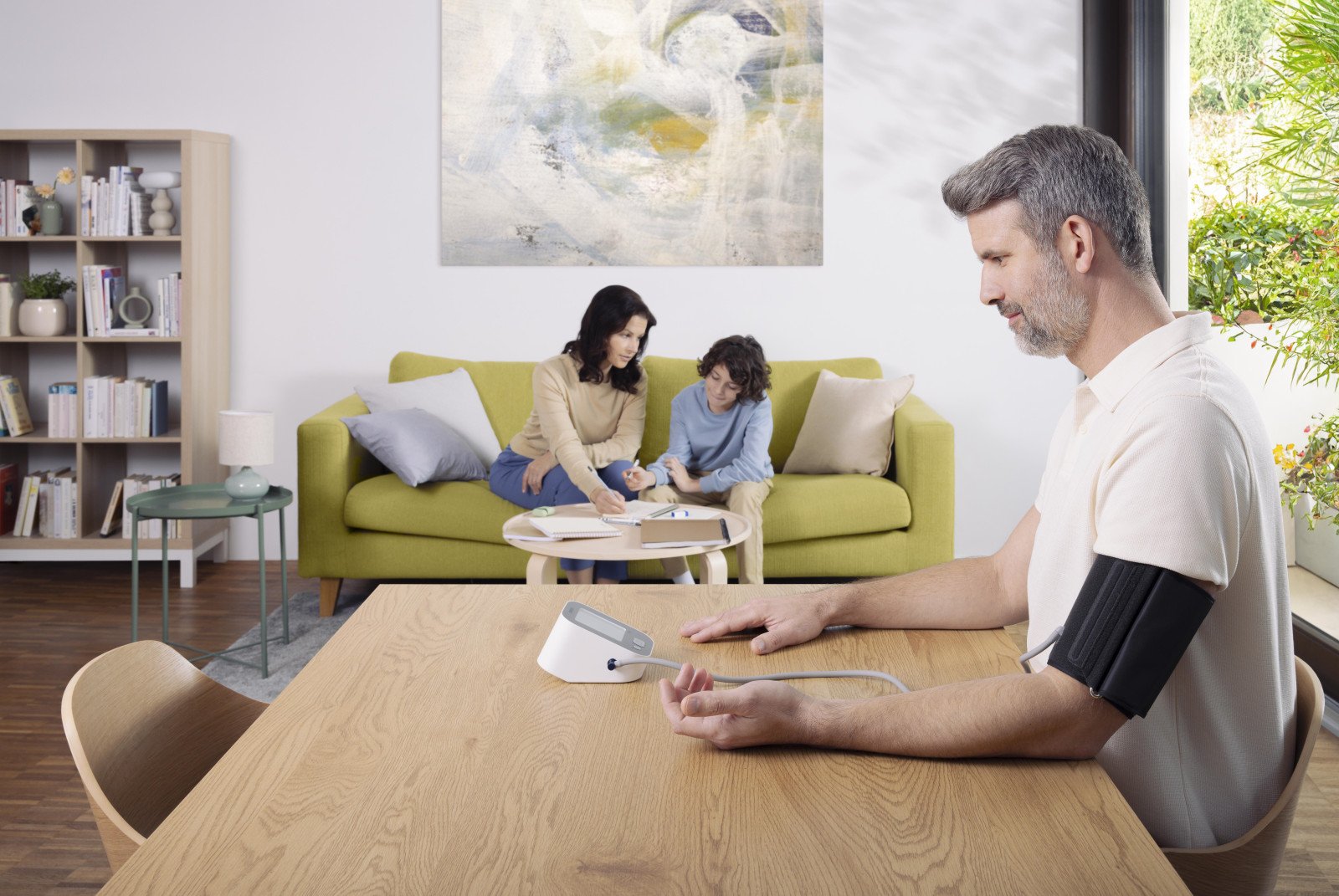Respiratory Conditions
Identify pediatric wheeze today
Identify pediatric wheeze today, help prevent health implications tomorrow
55% of parents identify wheezing in their children differently to professionals

Wheezing is the symptomatic manifestation of any disease process, which causes an obstruction in the airways, and the most common symptom of asthma in children under 5
What is wheezing?
It’s commonly a distinctive high-pitched sound generated anywhere from the larynx to the distal bronchioles during expiration or inspiration, but it doesn’t always sound the same and can be difficult to differentiate from other sounds produced during breathing.⁴ Identifying wheeze is key for the control of asthma symptoms in children, and to help prevent attacks. Children are more likely to require urgent medical intervention for asthma than more mature sufferers5. Moreover, poorly managed asthma can result in reduced quality of life for young patients, a more regular need for healthcare resources, and substantial ongoing costs to public health services. ¹ ²
Understanding wheezing
It is also true that being at home, and spending time with their children, parents are ideally placed to help monitor wheeze and provide their doctor or pulmonologist with insights. Consequently, a better understanding of what constitutes asthmatic wheezing, early and accurate identification, plus appropriate long-term disease management are all required to allow for the best possible outcomes.
Learn more at OMRON Academy

WheezeScan
Parents can manage their child's wheezing at home
An innovative wheeze detector, for children with symptoms of asthma OMRON WheezeScan is a handy tool to help parents manage their child’s asthma symptoms at home. This device provides parents with an objective assessment of the presence of wheezing, or not, supporting in what could be emotionally challenging for some parents. (OMRON Asthma Diary app will no longer be available as of September 10, 2025. Although the app will be discontinued, the WheezeScan device can still be used independently. Please make sure to save your Asthma Diary data before September 10, 2025)

How a digital wheeze detector, plus diary, provides a clearer view of wheezing in preschool children⁷
A recent pilot study focused on how the use of a digital wheeze detector (used x2 times per day) combined with input and monitoring of symptoms entered into a clinical diary (accessed via smartphones) could help parents and clinicians with disease management.
The study was carried out over 30 days and included 20 children aged 9-72 months with a doctor’s diagnosis of wheezing during the last 12 months, that required prescription reliever medication.
The following results were recorded7:
Adherence amongst parents to daily monitoring reached an average of 81%.
The majority of parents found use of the wheeze detector ‘uncomplicated’.
Parents detected wheezing without digital support in only 22/708 (3.1%), and with digital support in 140/708 (19.8%) of recorded events.
Over the 30 days, the asthma control test improved for 9/14 (64%) of patients from 18.1 to 22.6 points on average.
70% of parents asked to keep the detector for future use and 45% would recommend it to other parents of wheezing children.
Common types of pediatric wheezing
Wheezing can be classified according to its pattern and duration.⁷
Wheeze according to pattern:
a. Episodic wheeze (often associated with clinical evidence of a viral cold)⁷
b. Multi-trigger wheeze (wheezing present with and apart from an acute viral episode)⁷
Wheeze according to duration:
a. Never or infrequent
b. Transient early wheeze (starts in the 1st year of life, continues through the 2nd and subsides after the 3rd year)
c. Intermediate wheeze (wheezing with onset between 18 and 42 months and persists into later life)
d. Late-onset wheeze (infrequent wheezing from 6 to 42 months, more frequent at 42 months and persists up to 6 years old)
e. Persistent wheeze (onset at 6 months or later, this subgroup presents with symptoms similar to asthma with 2 further subgroups):
Nonatopic persistent wheezing phenotype (accounts for around 40% of patients, triggered mainly by viral illness)
IgE-associated* atopic and/or persistent wheezing phenotype (accounts for around 60% of persistent wheezing cases, onset in 2nd year of life persists into late childhood, more common in males, triggered by house dust mites and early sensitization to food/aeroallergens)
*IgE-associated: IgE is an immunoglobulin that plays a central role in acute allergic reactions and chronic inflammatory allergic disease.
References
1 Gong, Henry. “Wheezing and asthma.” Clinical Methods: The History, Physical, and Laboratory Examinations. 3rd edition (1990).
2 Caminati, Marco et al. “Uncontrolled Asthma: Unmet Needs in the Management of Patients.” Journal of asthma and allergy vol. 14 457-466. 3 May. 2021
3 Cane, R. S., S. C. Ranganathan, and S. A. McKenzie. “What do parents of wheezy children understand by “wheeze”?.” Archives of disease in childhood 82.4 (2000): 327-332.
4 Ng, Mark Chung Wai, and Choon How How. “Recurrent wheeze and cough in young children: is it asthma?.” Singapore medical journal 55.5 (2014): 236.
5 Moorman, Jeanne E., et al. “National surveillance of asthma: United States, 2001-2010.” Vital & health statistics. Series 3, Analytical and epidemiological studies 35 (2012): 1-58.
6 Dramburg, S., et al (2021). The impact of a digital wheeze detector on parental disease management of pre-school children suffering from wheezing—a pilot study. Pilot and Feasibility Studies, 7(1).
7 Al-Shamrani, A., et al. (2019). Wheezing in children: Approaches to diagnosis and management. International Journal of Pediatrics and Adolescent Medicine, 6(2), pp.68–73.
